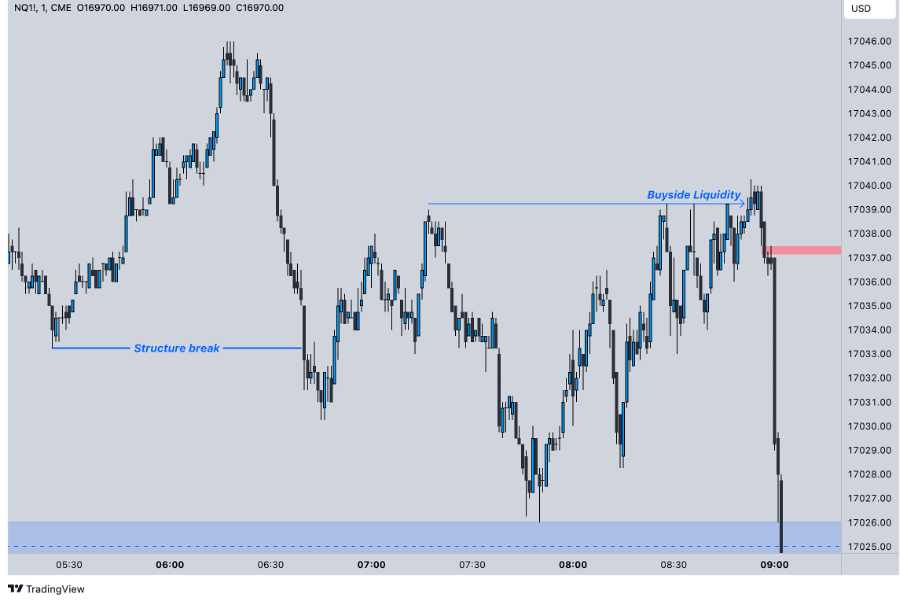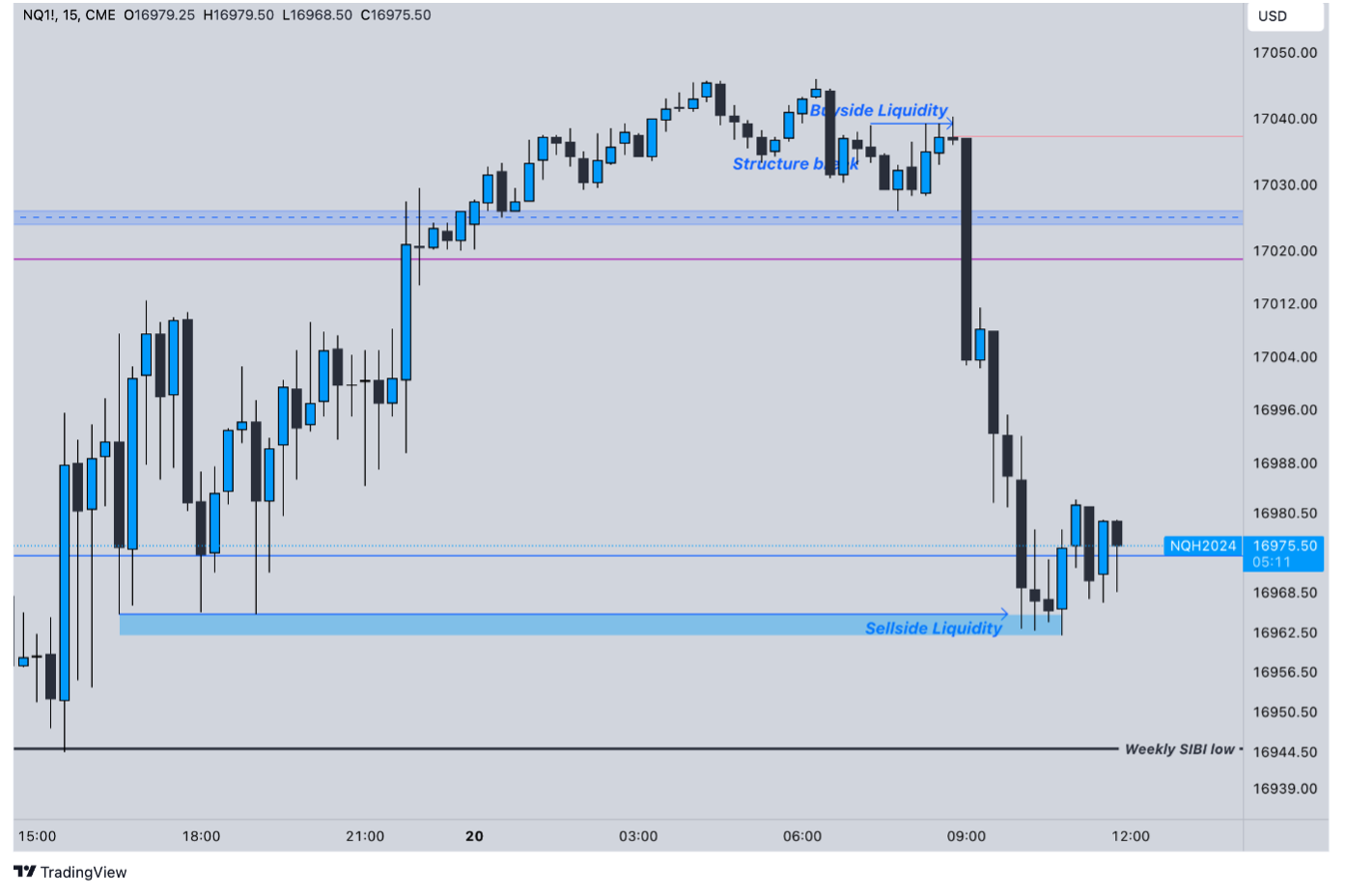Fundamental analysis
Apple is at a critical juncture as it faces the challenge of protecting its $17 billion smartwatch business in the US. This important revenue source for the company is under threat due to a patent dispute with Masimo Corp. over its blood oxygen level measurement feature. In response, Apple is swiftly implementing software fixes and looking for possible solutions to prevent a potential ban on the sale of the watch. This situation creates uncertainty not only in technical development and testing but also in legal and regulatory aspects that could have a significant impact on the company's continued growth and innovation capabilities.[2]
Technical analysis
From a technical point of view, as I mentioned in the introduction, I intended to analyse the NASDAQ 100, since Apple makes up the largest part of it. The price has been in strong bullish structures since November so speculating on a downside is very risky.* As in any market, the rule is that after an impulsive move, we can expect a correction. It was this aspect that supported my idea of Apple's share price weakening due to legal troubles.[3]
I waited to see how the price would develop before the opening of trading in London when the main price movements of the day started in the market. First, a bearish structure was formed (On the attached chart: Structure Break). Then I saw price start to form equal highs - Buyside Liquidity- which was the key factor for me. To enter a sell position, I needed to see prices rise above these peaks in the short term and then fall. This will cause the removal from the market of traders who were selling early and had set Stop Loss orders above these peaks (Buy Stop orders).

*
This is what happened, and I was able to enter the trade with a target of $16,965, which corresponded with the Sell-side Liquidity zone needed to exit the positions of those who were selling. I have no further selling positions planned rather I will consider entering buying positions and thus joining the longer-term trend.

*
* Past performance is no guarantee of future results
[1,2,3] Forward-looking statements are based on assumptions and current expectations, which may be inaccurate, or based on the current economic environment which is subject to change. Such statements are not guaranteeing of future performance. They involve risks and other uncertainties which are difficult to predict. Results could differ materially from those expressed or implied in any forward-looking statements.








